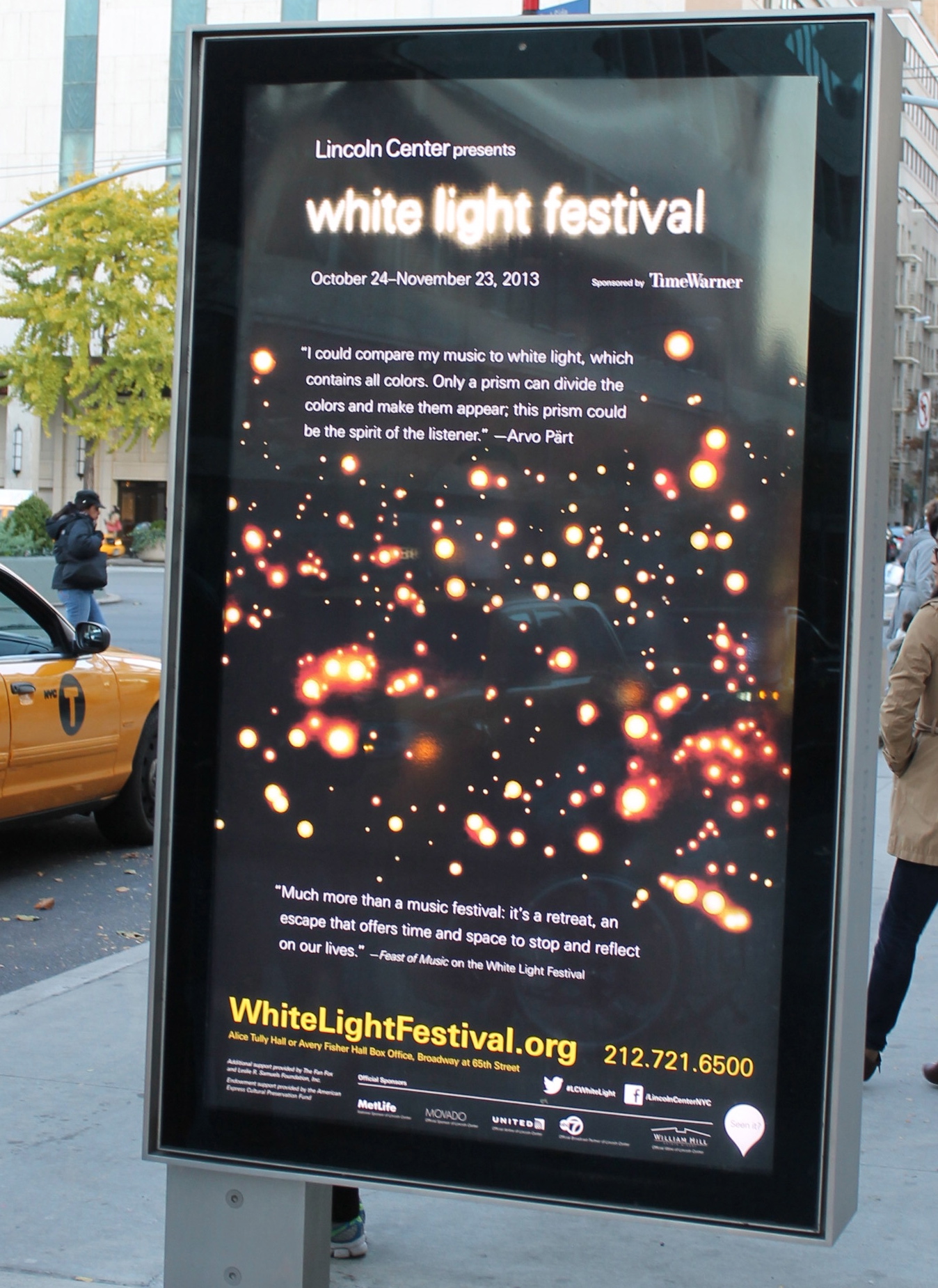An Easily A-Choired Taste

New York
Avery Fisher Hall, Lincoln Center
11/10/2013
Veljo Tormis: Overture No. 2
Arvo Pärt: In principio (New York Premiere) – Da pacem Domine
Wolfgang Amadeus Mozart: Ave Verum Corpus, K. 618
Jean Sibelius: Symphony No. 5 in E-flat major, Opus 82
Estonian Philharmonic Chamber Choir, Daniel Reuss (Choir Director), Estonian National Symphony Orchestra, Neeme Järvi (Conductor)
The credo behind the White Light Festival comes directly from the Estonian composer Arvo Pärt: “I could compare my music to white light, which contains all colors. Only a prism can divide the colors and make them appear; this prism could be the spirit of the listener.”
That was precisely what occurred yesterday afternoon, when the spirit of Arvo Pärt appeared through his own Estonian Philharmonic Chamber Choir in three works with the Estonian National Symphony. The orchestra is good (and in one case exceptional) because Neeme Järvi is one of the iconic conductors of our day, and his performances of North Europe music are exceptional.
Yet the fact is that Estonia–with Wales–produces the most singular choir singing anywhere in the world, and this “chamber” choir of a mere 27 voices rings out, radiates, and even with a large orchestra in front of them, the Latin prayers set to music by composer Pärt were the most stunning sections of the afternoon.
The three works were meant to be–and were–transcendental. The longer work, In Principio, a New York premiere, was, for even of those who have heard too much of the composer, a revelation. Nothing was held back here in these five sections from the Gospel of John. The Estonian Chamber Chorus could give mighty shouts when “the light shineth in darkness”, or in the longest section, was suitably mournful when “He came unto his own, and his own received him not.” Yet there was no sameness in the proclamations. So important are choruses to this great Estonian composer, that I for one hadn’t realized that his scoring for orchestra was so very exciting.
The first section showed orchestra in its fulness, while the chorus repeated its prayer. In the second section about the appearance of John, one heard–would you believe it from Arvo Pärt?–a whimsicality, a jumping between chorus and orchestra. The end with repeated chords from both orchestra and chorus, with only the slightest dissonance (it sounded like Philip Glass for the first minutes) ended with such glorious measures for cymbals, drums, chords and choir that it gave a new voice to the composer, even dying out in the last bars.
Yet truth must be told. The 26 minutes of this work and Pärt’s Da pacem Domine, glorious as they were, paled for the mere three minutes of Mozart’s Ave verum corpus. The women of the chorus somehow made their voices like young boys, Mr. Järvi gave the strings and organ a soft accompaniment., and such was the sanctity and inspiration of 46-bar motet that he repeated it again.
Twice was enough. Ave verum corpus must be as rare as its unqualified immanence.
The evening began with a new work, an overture by an apparently famous Estonian composer, Veljo Tormis, giving the Estonian National Symphony Orchestra a chance to show off their brass and percussion. This was not exactly movie music, but the effect wasn’t far from the cinema. Mr. Järvi as always, gave his utmost to his countryman.
(A personal note: A few months after he came out of the hospital several years ago, recovering from a heart attack, I had a phone interview with the conductor, and at the end, asked which music somebody recovering from a bad illness could listen to. He answered, “Oh, the usuals, Bach, Mozart etc. But my countryman Edvard Tubin has music which is equally moving in its own way.”
(He was correct. Next time, let us hear some Tubin.)
The last work was heard just last week in Carnegie Hall. Sibelius’s Fifth Symphony was given a mighty performance by the Cleveland Orchestra, which pulled out all the stops for the blazing finale.
Mr. Järvi set a different tone. Perhaps because of his pursuit of verisimilitude in every bar, he held strictly to the tempos, and one felt an absolute control. Where the Cleveland Orchestra had set out the introduction with an increasing tension (thereby allowing the final chorale to urgently erupt), Mr. Järvi let the music unfold on its own, setting an atmosphere where the music, more natural, was inspiring enough. Here the chorale (which we all wait for), wasn’t quite breathtaking.
(To his credit–and showing the cowardice of other conductors!– when applause broke out after the first movement, he turned to the audience and put first finger to the mouth. In other words, he politely said, “Shut the hell until before I finish the piece!”).
The encore was a work new to me, Sibelius’s Andante festivo, where for the first time, one heard the most glorious string tone from that orchestra in a most unusual ending.